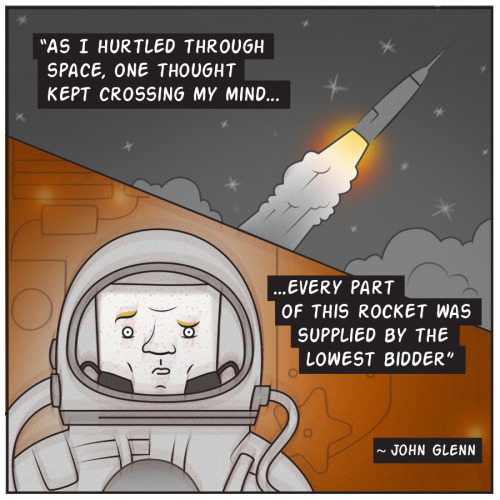Needingsomespace - Space Pov

More Posts from Needingsomespace and Others
Solar System: Things to Know This Week
Follow our Juno craft during a close flyby of Jupiter, learn about Cassini’s final mission during a Facebook live event (in case you missed it) and more!

1. Jupiter, Up Close
Our Juno mission completed a close flyby of Jupiter on Thursday, February 2, its latest science orbit of the mission. All of Juno’s science instruments and the spacecraft’s JunoCam were operating during the flyby to collect data that is now being returned to Earth.

Want to know more? Using NASA’s Eyes on the Solar System and simulated data from the Juno flight team you can ride onboard the Juno spacecraft in real-time at any moment during the entire mission.

2. In Case You Missed It–Cassini Facebook Live
Cassini Project Scientist Linda Spilker and mission planner Molly Bittner take questions about the mission’s “Ring-Grazing” orbits during Facebook Live. Watch it now: www.facebook.com/NASA/videos/10154861046561772/

3. Cassini Scientist for a Day Essay Contest
The deadline is Friday, February 24 for U.S. student in grades 5 to 12. For international students, visit the page for more info!
More: solarsystem.nasa.gov/educ/Scientist-For-a-Day/2016-17/videos/intro

4. Cassini Spies Dione
Dione’s lit hemisphere faces away from Cassini’s camera, yet the moon’s darkened surface are dimly illuminated in this image, due to the phenomenon of Saturnshine. Although direct sunlight provides the best illumination for imaging, light reflected off of Saturn can do the job as well. In this image, Dione (698 miles or 1,123 kilometers across) is above Saturn’s day side, and the moon’s night side is faintly illuminated by sunlight reflected off the planet’s disk.
Discover the full list of 10 things to know about our solar system this week HERE.
Follow us on Tumblr for your regular dose of space: http://nasa.tumblr.com
![The Flash Spectrum Of The Sun [2048 × 1152]](https://64.media.tumblr.com/00729d06686ab187f6af28a24e8f2e45/tumblr_ovwk39G7BV1ve10t6o1_500.jpg)
The Flash Spectrum of the Sun [2048 × 1152]

Enceladus striated surface as seen by Cassini .
js
What a man. John Glenn ❤


RIP John Glenn

Voyager 1 color-enhanced image of Saturn taken on October 18, 1980, 25 days before closest approach.

Space: Submission


TODAY IN HISTORY: On January 24, 1986, NASA’s Voyager 2 space probe made its closest approach to planet Uranus.
-
 padbuck liked this · 2 months ago
padbuck liked this · 2 months ago -
 alanos-mairos-tsoglanos reblogged this · 3 years ago
alanos-mairos-tsoglanos reblogged this · 3 years ago -
 muzantropic reblogged this · 3 years ago
muzantropic reblogged this · 3 years ago -
 jiiminpng liked this · 4 years ago
jiiminpng liked this · 4 years ago -
 schneidersix liked this · 4 years ago
schneidersix liked this · 4 years ago -
 hangup-machine liked this · 4 years ago
hangup-machine liked this · 4 years ago -
 katoprofen liked this · 4 years ago
katoprofen liked this · 4 years ago -
 skopjanka liked this · 4 years ago
skopjanka liked this · 4 years ago -
 velpecula reblogged this · 4 years ago
velpecula reblogged this · 4 years ago -
 laosadealcor reblogged this · 4 years ago
laosadealcor reblogged this · 4 years ago -
 wormrightss reblogged this · 5 years ago
wormrightss reblogged this · 5 years ago -
 livinglifeamok liked this · 5 years ago
livinglifeamok liked this · 5 years ago -
 megadarius1 liked this · 5 years ago
megadarius1 liked this · 5 years ago -
 crutellmarz liked this · 5 years ago
crutellmarz liked this · 5 years ago -
 solitaryfossil liked this · 5 years ago
solitaryfossil liked this · 5 years ago -
 ppyrophorus reblogged this · 6 years ago
ppyrophorus reblogged this · 6 years ago -
 abanalslog reblogged this · 6 years ago
abanalslog reblogged this · 6 years ago -
 warrenzevon liked this · 6 years ago
warrenzevon liked this · 6 years ago -
 another-nancyboy reblogged this · 6 years ago
another-nancyboy reblogged this · 6 years ago -
 another-nancyboy liked this · 6 years ago
another-nancyboy liked this · 6 years ago -
 comatose-joy reblogged this · 6 years ago
comatose-joy reblogged this · 6 years ago -
 pgfone liked this · 6 years ago
pgfone liked this · 6 years ago -
 shrlck liked this · 7 years ago
shrlck liked this · 7 years ago -
 rainst0rm reblogged this · 7 years ago
rainst0rm reblogged this · 7 years ago -
 martingore101 liked this · 7 years ago
martingore101 liked this · 7 years ago -
 gingerzlover reblogged this · 7 years ago
gingerzlover reblogged this · 7 years ago -
 gargonautt liked this · 7 years ago
gargonautt liked this · 7 years ago -
 unrealmatter liked this · 7 years ago
unrealmatter liked this · 7 years ago -
 jatinavery22 reblogged this · 7 years ago
jatinavery22 reblogged this · 7 years ago -
 jatinavery22 liked this · 7 years ago
jatinavery22 liked this · 7 years ago -
 r3nton reblogged this · 7 years ago
r3nton reblogged this · 7 years ago -
 comatose-joy reblogged this · 7 years ago
comatose-joy reblogged this · 7 years ago -
 r3nton liked this · 7 years ago
r3nton liked this · 7 years ago -
 valleydoll777 reblogged this · 7 years ago
valleydoll777 reblogged this · 7 years ago -
 valleydoll777 liked this · 7 years ago
valleydoll777 liked this · 7 years ago -
 jenexiste-pas reblogged this · 7 years ago
jenexiste-pas reblogged this · 7 years ago -
 p-errah liked this · 7 years ago
p-errah liked this · 7 years ago
